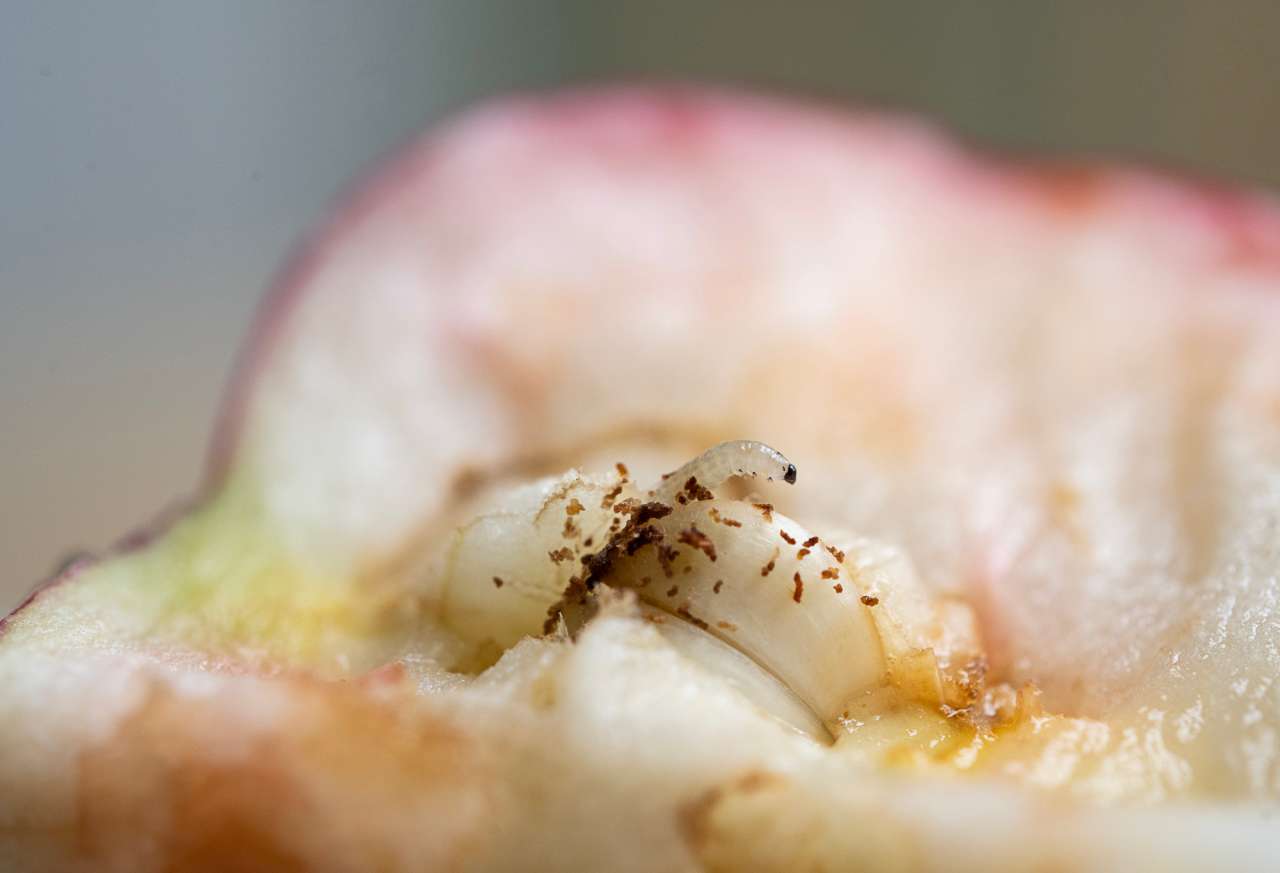"Worms in apples" throughout the country

Photo: Erling Fløistad.
A shortage of rowanberries has caused apple fruit moths to attack apple trees all over the country in 2020. Not since 1994 have there been such extensive attacks — with up to 100% of crops being damaged in many orchards.
The culprit is the apple fruit moth, which has been considered the most serious apple pest in Norway since the late 1890s. Apple fruit moths prefer rowanberries, but in years with a shortage of berries they can invade apple orchards and cause attacks on apples.
NIBIO has developed a national forecasting model for apple fruit moth attacks. Among other things, the system can predict damage in apples and give advise as to exactly when to apply measures. The model is based on ecological data which can vary locally, and information has therefore been collected from around 50 stations all over the country.
There is little knowledge on survival and development of apple fruit moth larvae in apples. That makes it difficult to provide forecasts for the following year after severe attacks in apples. NIBIO researchers would therefore like to investigate further.
Gunnhild Jaastad, a researcher at NIBIO, explains that in 2019 there were a lot of rowanberries in which the moths could lay their eggs. The adults hatched in the spring of 2020, but there was a shortage of rowanberries that year, and they moved into apple orchards to oviposit.
"Apples and rowanberries have a fairly similar smell. Together with Swedish researchers we have analysed the volatile components of apples and rowanberries and found that some of their components are the same," says Jaastad.
They now want to study apple fruit moths and their survival in apples and have started a preliminary project together with the Norwegian Agricultural Extension Service.
If the moth survives and overwinters poorly in apples, there would not be a crisis before the next year with low fruit setting in rowan, normally in 2–3 years.
Contacts

Contacts

